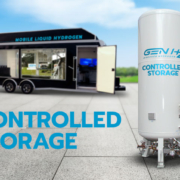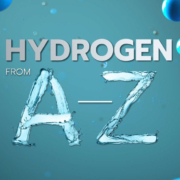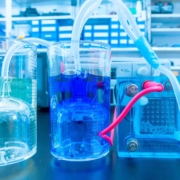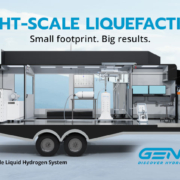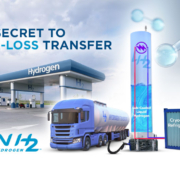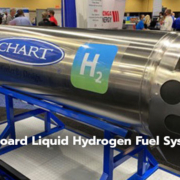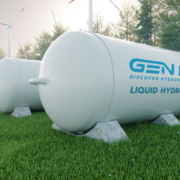What Houdini and Hydrogen Have in Common
By: GenH2 Staff
Read Time: 3 minutes
As one of the most famous magicians in the world, Harry Houdini earned his claim to fame as the master escape artist. It seemed nothing could restrain him as proved by using handcuffs, chains, ropes, straitjackets, and more! Houdini went as far as escaping from a sealed milk can with water in it. This ability to escape from anything both astounded and perplexed the experts. Similarly, hydrogen is known to scientists and engineers as the escape artist of molecules. Hydrogen molecules are small and light, which makes it easy for them to permeate materials and penetrate seals as often witnessed in the space program.
Hydrogen is a potent energy carrier, with enormous potential for applications expanding in transportation and fuel cell technologies. Liquid hydrogen is especially important as it offers the biggest energy opportunity in a light, compact molecule. However, storing hydrogen effectively in vehicles and fueling stations presents considerable challenges. Being the lightest element, hydrogen requires significant compression and high-pressure tanks to store it. Additional challenges also occur due to diffusion. Due to its small size, hydrogen can also permeate through many metals commonly used in the construction of most storage tanks. As a result, special materials or liners are often used to minimize the molecule ‘escaping’ through hydrogen storage systems.
A major concern in liquid hydrogen storage is minimizing hydrogen losses from liquid boil-off. Because liquid hydrogen is stored as a cryogenic liquid, any heat transfer to the liquid will cause hydrogen evaporation and require venting once pressure builds. The source of this heat can be ortho-to-para conversion, mixing or pumping energy, radiant heating, convection heating, or conduction heating. Any evaporation will result in a net loss in system efficiency. However, there will be an even greater loss if the hydrogen is released into the atmosphere instead of recovered. The first step in avoiding boil-off losses is to perform an ortho-to-para conversion of the hydrogen during the liquefaction step to prevent any conversion and subsequent evaporation from occurring during storage. Another important step in preventing boil-off is to use insulated cryogenic containers.
Much like comparing a refrigerator to a cardboard box, controlled storage systems, and traditional hydrogen storage tanks differ vastly in their capabilities and efficiency. Controlled storage systems provide a regulated internal environment, which ensures stable pressure within the system and eliminates the need for venting. These systems achieve zero loss by enabling complete control over the stored liquid hydrogen, making them an absolute game-changer for global adoption.
Additionally, most people are unaware that the greatest losses tend to occur during the molecule transfer. To better control costs it is important to understand the potential losses that may occur during the value chain. Liquid hydrogen truck transport costs include the same fuel, driver wages, and maintenance charges as for gas transport, but also include boil-off losses during transport. Expected boil-off losses during transfer between tanks are 10%-20% but can be as high as 50% (Huston 1984; Johannsen 1993; Taylor et al. 1986). Boil-off during transport is expected to be 0.3%-0.6%/day. These loss numbers earned the hydrogen molecule the ‘escape artist’ label. To optimize energy efficiency and output, it is imperative to minimize boil-off losses.
Controlled systems are very efficient as they can also significantly reduce the losses that occur during the hydrogen transfer process. These specialized systems offer the ability to sub-cool the liquid hydrogen before use to ensure it remains in a liquid state while moving between systems.
The future of energy lies in the efficient storage and utilization of liquid hydrogen. With controlled storage and transfer systems, we can control the ‘escape artist’ and harness the immense energy carrier potential to power our homes, industries, and transportation systems. This will pave the way for a sustainable, eco-friendly world powered by hydrogen!
GenH2 manufactures infrastructure solutions for the liquid hydrogen value chain, focusing on portable, light-scale hydrogen liquefaction, storage, and transfer solutions to accelerate widescale rollout for advanced clean energy. To learn more about how GenH2 revolutionizes controlled storage technologies, download our Controlled Storage Solution Brief!

